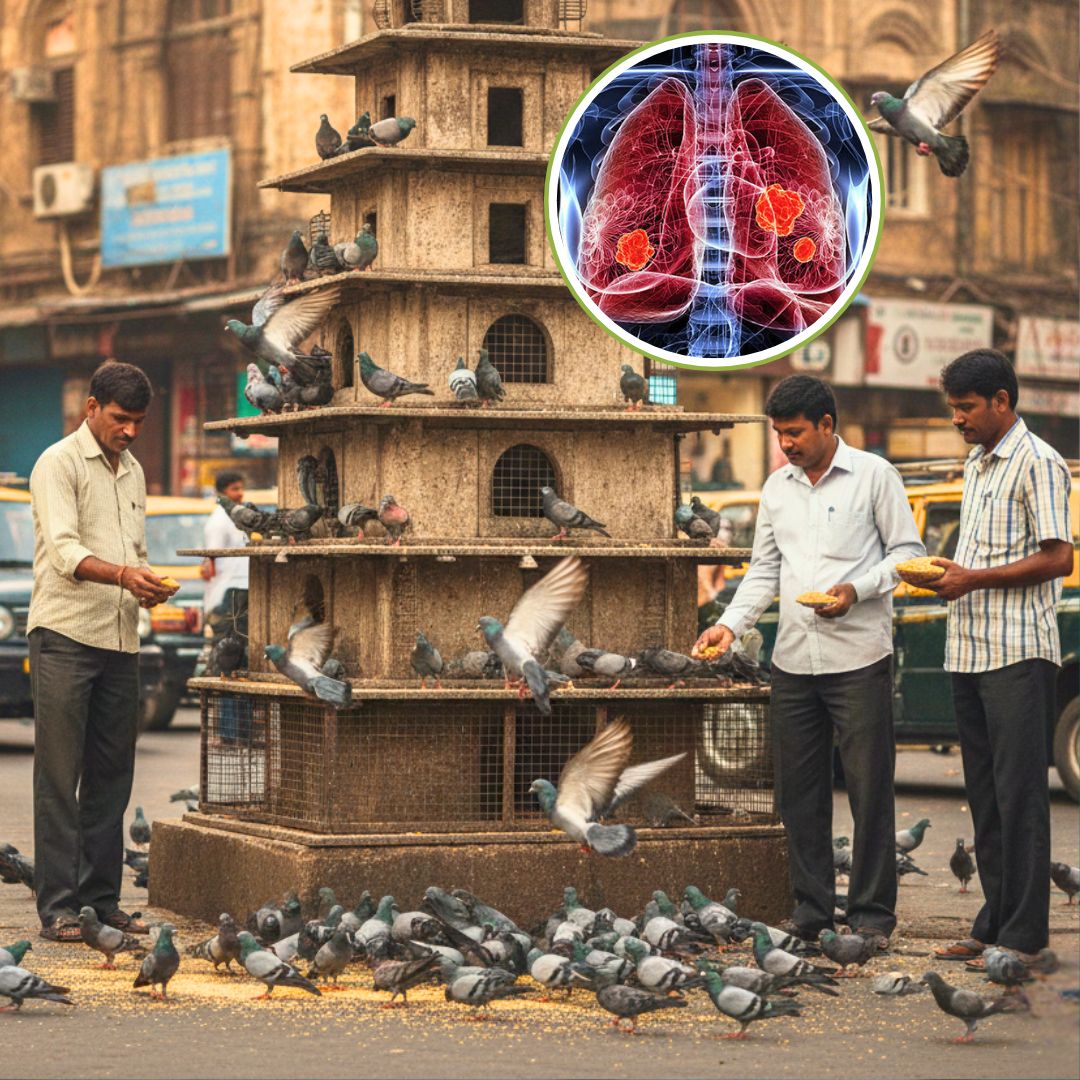Mumbai’s longstanding pigeon feeding tradition is facing bans and protests after the Bombay High Court ordered closure of public feeding spots, known as kabutarkhanas, over serious health and ecological concerns.
The ban has triggered clashes, especially with the Jain community, who see feeding pigeons as a religious duty. Meanwhile, doctors warn that exposure to dried pigeon droppings and feathers can cause hypersensitivity pneumonitis, a potentially fatal lung disease.
The Health Risks Behind the Tradition
According to a study published in the National Library of Medicine, Pigeon droppings and feather dust carry fungal and bacterial pathogens that can cause severe respiratory illnesses, including hypersensitivity pneumonitis (HP). HP is an immune reaction that inflames lung tissue, often leading to chronic breathing issues and lung scarring if untreated. Prolonged exposure to pigeon antigens in crowded urban areas like Mumbai has led to a notable increase in HP cases. People can develop symptoms such as shortness of breath, coughing, fatigue, and in severe cases, respiratory failure.
Doctors and pulmonologists in Mumbai report a sharp rise in lung diseases linked to pigeons, highlighting the public health threat these urban birds pose when their populations grow unchecked. The acidic nature of pigeon droppings also damages heritage buildings like the Chhatrapati Shivaji Maharaj Terminus, adding another layer of concern.
Tradition vs. Public Health: The Social Conflict
Kabutarkhanas have been part of Mumbai’s cultural landscape for over a century, especially in the Jain and Gujarati communities where feeding pigeons is considered an act of compassion and non-violence. These communal feeding spots also reflect Mumbai’s communal harmony and faith.
However, health concerns and ecological damage have led the Bombay High Court to ban public feeding spreads of pigeons at most kabutarkhanas. Authorities have even begun filing criminal cases against violators. This has sparked protests, with some activists and religious groups demanding the ban be lifted or regulated rather than a complete closure.
The government has proposed solutions like staggered feeding hours and expert committees to mediate between health experts and tradition bearers. Meanwhile, political leaders urge a balanced approach respecting community faith and public welfare.
What Can Be Done to Protect Health and Heritage?
- Avoid feeding pigeons in congested public areas to reduce accumulation of droppings.
- Support implementation of regulated feeding zones with hygiene and health monitoring.
- Increase awareness about diseases linked to pigeon exposure, promoting personal protective measures.
- Clean pigeon droppings safely with protective equipment to limit fungal spore inhalation.
- Authorities must balance cultural sentiments with scientific evidence by involving community leaders in planning.
While avoiding feeding pigeons in congested areas is generally recommended to reduce health risks, individual circumstances and local conditions may vary, and this advice does not substitute for professional medical consultation or local regulatory guidance.
The Logical Indian’s Perspective
This controversy illustrates how urban health priorities and cultural traditions can sometimes clash. The compassion behind feeding pigeons reflects deeply held values, yet health data show real risks associated with unchecked pigeon populations. By fostering dialogue rooted in empathy and respect, Mumbai can pioneer solutions that protect both people and heritage without erasing meaningful practices.











